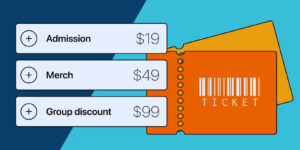Introduction:
In today’s fast-paced world, having the right car insurance isn’t just a legal requirement—it’s a necessity for financial peace of mind. Whether you’re a new driver or a seasoned one, selecting the right car insurance policy can be overwhelming. With a myriad of options available, how do you know which policy is right for you? This comprehensive guide will help you navigate through the maze of car insurance options to find a plan that offers the right coverage at the right price.
1. Why Comparing Car Insurance is Important
Choosing the right car insurance policy isn’t a one-size-fits-all process. Every driver has unique needs based on their vehicle, driving habits, and financial situation. Comparing car insurance policies allows you to:
- Save Money: Different insurance companies offer different rates. By comparing policies, you can potentially save hundreds of dollars annually.
- Get the Best Coverage: You can tailor your policy to include the exact coverage you need, avoiding overpayment for unnecessary options.
- Find Discounts and Benefits: Some insurers offer discounts for bundling policies, safe driving, or installing safety devices.
With such high stakes, it’s important to arm yourself with the knowledge needed to make the best decision.
2. Types of Car Insurance Coverage
Understanding the types of coverage available is the first step in comparing car insurance policies. Here are the primary categories:
Liability Coverage
This is the most basic type of car insurance and is required in most states. It covers bodily injury and property damage to others in an accident where you are at fault. However, it does not cover damage to your own car.
- Bodily Injury Liability: Covers medical expenses, lost wages, and legal fees for the other party.
- Property Damage Liability: Pays for damage to someone else’s vehicle or property.
Collision Coverage
Collision coverage pays for repairs to your own vehicle if you collide with another vehicle or object, regardless of who is at fault. It is especially valuable for drivers with newer or higher-value vehicles.
Comprehensive Coverage
Comprehensive coverage protects you from non-collision-related damages such as theft, vandalism, natural disasters, and even hitting an animal. It is often combined with collision coverage for more complete protection.
Personal Injury Protection (PIP)
Personal Injury Protection, or PIP, covers medical expenses and sometimes lost wages for you and your passengers, regardless of who is at fault in an accident. Some states require this coverage, while in others it is optional.
Uninsured/Underinsured Motorist Coverage
If you’re hit by a driver who doesn’t have insurance or doesn’t have enough to cover the full extent of damages, this coverage will help cover your medical bills and car repairs.
3. Factors to Consider When Comparing Car Insurance
Before you start comparing car insurance policies, there are several key factors you need to consider:
- Coverage Needs: Make sure the policy covers all your essential needs—liability, collision, comprehensive, and additional options like roadside assistance.
- Premiums and Deductibles: Consider both the monthly or annual premium and the deductible (the amount you pay out of pocket before insurance kicks in).
- Policy Limits: Check the maximum amount the insurance will pay for a claim. Low limits can leave you with hefty bills in the event of a serious accident.
- Discounts: Many insurers offer discounts for safe driving, bundling home and auto policies, or even for installing anti-theft devices.
- Reputation and Customer Service: Research the insurance company’s reputation, claims process, and customer reviews. You want a provider that will be reliable in the event of a claim.
4. How to Compare Car Insurance Online
Online tools have made it easier than ever to compare car insurance policies. Here’s how you can efficiently use these tools:
Step 1: Gather Your Information
Before you begin, make sure you have your personal and vehicle information on hand, such as:
- Driver’s License Number
- Vehicle Identification Number (VIN)
- Mileage
- Driving History
Step 2: Use Comparison Sites
There are numerous websites that allow you to compare car insurance quotes from multiple providers. Some of the most popular include:
- NerdWallet
- The Zebra
- Policygenius
- Compare.com
These websites let you enter your details once and get quotes from several insurers at once, saving you time and effort.
Step 3: Analyze the Quotes
Once you have a list of quotes, don’t just look at the price. Compare the types of coverage, limits, and deductibles each policy offers. This will help you determine the best value, not just the cheapest option.
Step 4: Contact Insurers Directly
Sometimes, you can negotiate better deals directly with insurance companies, especially if you have a good driving record or are willing to bundle multiple types of insurance.
5. Tips for Saving Money on Car Insurance
Saving on car insurance doesn’t always mean reducing your coverage. Here are some strategies to help you lower your premium:
- Increase Your Deductible: A higher deductible will reduce your premium, but make sure you can afford it in case of an accident.
- Take Advantage of Discounts: Look for discounts based on your driving history, car safety features, or multi-policy bundling.
- Maintain a Good Credit Score: In some states, your credit score can impact your premium, so it pays to keep it high.
- Drive Safely: Avoiding accidents and traffic violations can keep your premium lower over time.
- Consider Usage-Based Insurance: Some insurers offer pay-as-you-go or usage-based insurance for drivers who don’t drive frequently.
6. Common Mistakes to Avoid When Choosing Car Insurance
It’s easy to make mistakes when choosing car insurance, but avoiding these pitfalls can save you money and headaches:
- Focusing Only on Price: The cheapest option isn’t always the best. Make sure you’re getting sufficient coverage.
- Not Shopping Around: Sticking with the same insurer for years might mean you’re missing out on better rates elsewhere.
- Underinsuring Your Vehicle: Trying to save money by choosing minimum coverage could backfire in the event of a serious accident.
- Overlooking Discounts: Many people miss out on discounts simply because they don’t ask for them.
7. Conclusion
Choosing the right car insurance is a balancing act between coverage and cost. By understanding your options, comparing policies online, and considering factors like coverage limits and discounts, you can find the best policy for your needs.
Whether you’re looking for the most affordable option or the most comprehensive coverage, a little research can go a long way in protecting you and your vehicle.
Take the time to review your insurance policy regularly and shop around to make sure you’re always getting the best deal. Remember, the right policy is not only a legal requirement but a crucial safeguard for your financial future.








